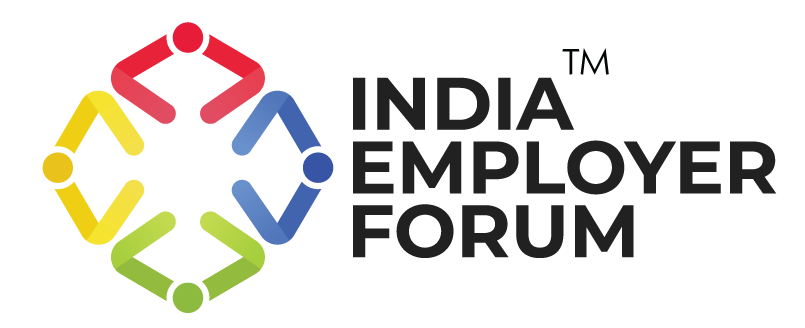India’s workforce stands at a pivotal crossroads. While the country continues to harness the potential of its young and growing talent pool, persistent challenges like declining employee engagement, high attrition, and widespread burnout are quietly eroding productivity. These issues go beyond surface-level HR concerns; they point to deeper structural inefficiencies in workplace culture, role design, and talent management. At the macroeconomic level, India still lags behind many G20 nations in labour productivity, a sobering reality that threatens the country’s ability to grow per capita income and achieve broad-based economic progress. As highlighted by institutions like the International Labour Organisation and McKinsey, productivity per worker is the most crucial lever for raising long-term income levels and delivering inclusive growth.
Why is India struggling to enhance workforce productivity?
Why, despite abundant talent and a rapidly digitalising economy, is India struggling to boost productivity? One reason lies in the uneven distribution of productivity across sectors. A significant portion of the workforce remains concentrated in low-value sectors like agriculture and informal services, which lack the necessary technological and managerial infrastructure to scale efficiently. Additionally, many organisations still follow rigid hierarchies and outdated job designs that reward presence over performance. The legacy mindset of equating productivity with time spent at a desk, rather than value delivered, remains deeply entrenched in many Indian workplaces. This time-bound, task-driven culture leaves little room for autonomy, innovation, or meaningful engagement, leading to an overall drop in output and morale.
At the same time, we are seeing a rise in technological adoption, with organisations investing heavily in digital tools and automation in hopes of boosting workforce efficiency. Yet, the impact of these tools is often limited unless they are integrated into broader workflows and accompanied by appropriate skill-building. For instance, automation in functions like HR, finance, and customer support has undoubtedly improved turnaround time and reduced errors. However, the real gains are observed in companies that embed these technologies into the fabric of their operations by building cross-functional digital teams, aligning technology initiatives with business outcomes, and equipping employees to work alongside AI rather than in fear of it.
People and productivity at work
The heart of the productivity problem, however, lies in how organisations treat their people. While AI and automation are reshaping how work gets done, businesses must rethink job design and skill development not as afterthoughts but as a core part of their productivity strategy. Successful organisations are those that move beyond the traditional “training” model and invest in more adaptive frameworks. These include breaking down roles into skill clusters that can evolve with changing technologies, introducing microlearning paths for continuous development, and enabling internal mobility so that talent can be dynamically matched to emerging business needs. This shift not only boosts engagement but also ensures employees stay relevant in the workplace for long.
A critical rethink is also needed in how productivity itself is measured. Far too many organisations continue to track inputs, hours worked, attendance, or even the number of emails sent, rather than focusing on business outcomes. This approach is not only outdated, but it’s counterproductive. To truly align employee performance with organisational value, companies must establish clear, measurable goals for each role that are tied to business impact. This shift requires investing in better performance tracking tools, fostering autonomy, and encouraging employees to take ownership of results rather than just processes. Especially in hybrid or remote work models, where visibility is reduced, such an outcome-based approach is essential to maintain both accountability and engagement.
How Flexible model enhances labour productivity?
Flexibility is another cornerstone of the modern productivity equation. Here, rigid work models can quickly become liabilities. The pandemic proved that flexible work when implemented with trust, accountability, and the right infrastructure, can in fact drive higher productivity. In India, companies are experimenting with hybrid setups, hub-and-spoke office models, gig integration, and flexitime arrangements to respond to employee needs without compromising business goals. These models allow organisations to decentralise talent, reduce overheads, and access a wider and more diverse talent pool, especially in Tier 2 and Tier 3 cities. However, flexibility alone is not enough; it must be supported by strong communication practices, clear KPIs, and a culture of collaboration to deliver real impact.
Looking to the future, it’s clear that certain roles and skills will take centre stage in driving productivity across sectors. With the rise of AI, sustainability, and digital transformation, job profiles like AI trainers, sustainability officers, behavioural data analysts, and digital transformation specialists are gaining traction. But what’s equally important is the renewed focus on soft skills—resilience, critical thinking, adaptability, and collaboration—which will serve as the glue in increasingly cross-functional and tech-integrated teams. Organisations that are preparing for this shift are already building robust talent pipelines and focusing on learnability as a key hiring metric.
In conclusion, India’s labour productivity challenge cannot be solved by technology alone. It requires a holistic strategy that aligns people, processes, and platforms. The focus must be on rethinking outdated role designs, redefining performance metrics, and embracing flexible, human-centric models of work. Above all, the transformation must be people-first—because while machines can automate tasks, only human capital can create long-term economic value. Productivity, in this new age of disruption, is no longer about doing more—it’s about doing what matters most, with clarity, purpose, and efficiency.
References:
- India’s turning point: An economic agenda to spur growth and jobs | McKinsey & Company | 2022
- India ranks low in labour productivity among G20 nations | The Economic Times | 2024
- Future of Work: Reshaping the Workplace for India’s Digital Economy | NASCSCOM | 2023
- Rethinking productivity | LinkedIn | 2022
- Global Workforce Hopes and Fears Survey | PwC India | 2024
- Future of Work | Boston Consulting Group






